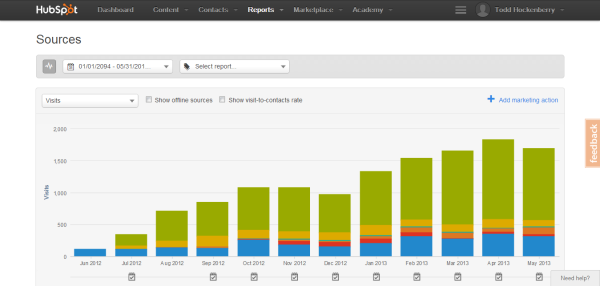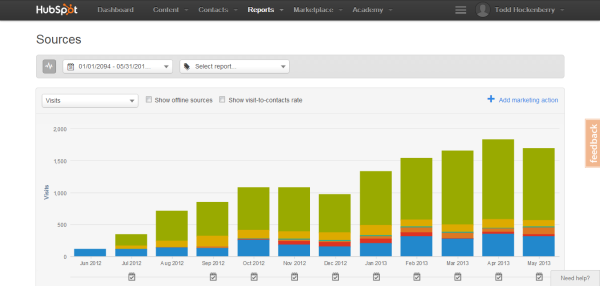 We work with a lot of highly specialized, technical manufacturing companies and one of the things we've heard a lot over the years is that no one wants to read about them. We've had clients who thought their products and services were too complex and technical to drive substantial internet traffic to things like a blog or social media account.
We work with a lot of highly specialized, technical manufacturing companies and one of the things we've heard a lot over the years is that no one wants to read about them. We've had clients who thought their products and services were too complex and technical to drive substantial internet traffic to things like a blog or social media account.
The thinking goes that highly technical fields, such as fiberglass reinforced plastic parts for cooling towers, aren't flashy enough to be interesting to read about. If someone is in the market for these kinds of goods and services, then they're going to want spec sheets and wouldn't be interested in regular blog posts.
There is one big problem with this line of thinking. It isn't true.
Well, to be fair, part of the underlying assumption is true. It is true that there isn't as much interest in something like laser marking systems as there is in celebrity gossip or home décor. Highly specialized engineering and manufacturing-based blogs and other content probably isn't going to go viral, retweeted by teens and pop stars. But that's not really the point of this kind of content anyway. So, what is the point?
Content With a Job
Every piece of content needs to have a purpose, a job. When it comes to technical content the job is fourfold:
1. Attract
2. Educate
3. Qualify leads
4. Contribute to the Inbound Sales process
To really understand and get the most out of technical content you need to keep the purpose of the content in the forefront of your mind.
AttractStraight up good old SEO is a prime use for technical content. By definition technical content is long tail. Not many people search 'pipe beveling machines for gas lines' or 'fuel additives for power generators,' but when they do, you can be fairly certain that they want to know what you are about. Industrial SEO is measured in quality of leads, not quantity. Most industrial companies need 10s and 100s of leads to make a huge sales difference as opposed to a consumer-oriented seller that needs thousands just to move the needle a little bit. Some of our clients are thrilled when we get them two or three great leads per month making the long tail part of SEO an ideal tactic to grow revenue.
EducateTechnical information might seem dull, but it has great potential for education. One of the great things about working with technical and industrial companies is that there is always something to write about. There are always topics to cover that the average reader might not know a lot about, or might like clarification on. New applications, new inventions, even new industries always provide lots of topics in which to place in context the solutions of an industrial company. Problems multiply and solutions are always in demand so the technical company that is writing will never lack for topics to address.
Qualify LeadsTechnical and complex areas of manufacturing aren't going to dethrone the latest Justin Bieber stunt, but that's ok. Good technical content is going to help you pull in leads that are high quality. Why? Because a Justin Beiber fan isn't going to be in the market for a laser marking system, but someone who downloads a case study about laser marking probably is. Judicious use of prmeium content will help qualify leads. Developing content that matches sales cycles shows you where technical buyers are in the sales process. Someone who asks for a request for quote is probably heading for the bottom of the sales funnel. Someone downloading a whitepaper about the used of fiberglass resins in the chemical processing industry is in your world, but may just be beginning to research a project and is an ideal candidate for lead nurturing.
Contribute to the Inbound Sales ProcessThe right case study sent to a good prospect builds credibility for inbound-focused salesperson. A relevant blog article builds credibility for a salesperson as more than an order taker. A vibrant LinkedIn group where the latest technical information is shared and discussed positions the salesperson as an expert in their field.
Using content produced for inbound marketing as a sales enablement tool is the hallmark of an inbound salesperson. Inbound is all about attracting people using marketing that is relevant to them. Inbound sales is about being the type of salesperson who prospects want to engage with and not hold their nose and tolerate.
Sharing great content, focused on prospects, delivering technical solutions that they need, using the channels they use, is the right way to drive online engagement for technical and industrial companies.

 You don't want your prospects to need these to make your site experience better!
You don't want your prospects to need these to make your site experience better!


